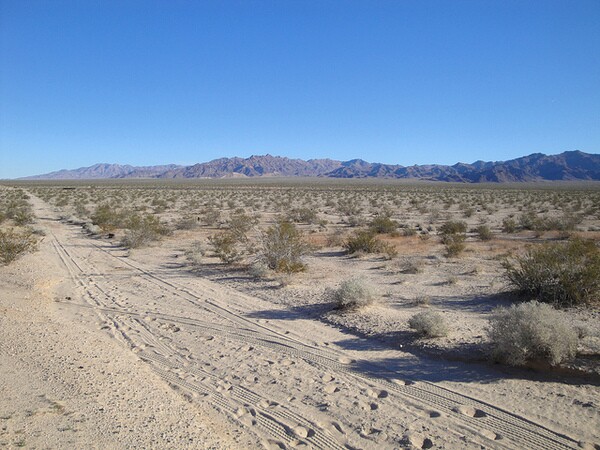Bad News For Big Desert Solar: Arid Lands Absorb Greenhouse Gases

The debate over whether utility-scale solar projects are right for desert public lands just got more complicated. A new study shows that undisturbed desert landscapes absorb a fair amount of carbon dioxide from the atmosphere, potentially helping to lessen climate change.
And according to the study, those landscapes may well sequester even more greenhouse gases as the amount of carbon dioxide in our atmosphere increases.
The study, which has run for ten years on research plots in the Mojave Desert in southern Nevada, indicates that arid lands worldwide may sequester as much as eight percent of humankind's greenhouse gas emissions by 2050.
Previous research had indicated that desert landscapes might well be absorbing a significant amount of CO2 from the atmosphere, but the findings were controversial. Work in the Gubantonggut Desert in China and in the Mojave published in 2008 suggested that desert landscapes may well be taking up atmospheric CO2. But critics pointed out that in order for that to be the case, the carbon dioxide would have to be readily detectable in the soil, either as organic matter or as carbonate compounds.
Think of it this way: forests can sequester lots of CO2, but it's no mystery where it goes: into the wood, bark, and forest floor soil. Deserts generally don't seem to have huge reservoirs of carbon compounds one can point to as possible destinations for sequestered atmospheric CO2.
So a team led by Washington State University biologist R. Dave Evans took a straightforward approach to determine whether desert soils do indeed take up CO2. Nine 75-foot-wide plots were set aside on the Nevada National Security Site. Three of the plots had extra carbon dioxide piped into their air to match the expected concentration in 2050: 550 parts of CO2 per million parts of air. Another three had air piped in with our current ambient CO2 concentration, around 380 parts per million. And the remaining three were just exposed to ambient air with no blowers involved.
After ten years of exposing essentially identical plots to different amounts of atmospheric CO2, Evans and his team excavated each plot to a depth of a meter, then measured the amount of carbon in all that soil. (And it was a formidable amount: more than 400 cubic meters for each plot.)
The results, as published this week in Nature Climate Change: All the plots had sequestered a fair bit of carbon, but the CO2-enhanced plots sequestered more, leading Evans and his team to speculate that by 2050, arid land ecosystems might account for between 15 and 28 percent of all landscape-based carbon sequestration.
Here's Evans describing his team's work:
But where does the carbon go when the desert absorbs it? Evans and his team found that under elevated CO2 conditions, a part of the desert ecosystem called the "rhizosphere" -- the zone of plant roots, fungal stems, and micro-organisms beneath the surface of the soil -- held a lot more carbon than did the soil from the other plots.
In other words, this ecosystem-based climate change mitigation service is provided by the living desert. When we convert the desert from a living ecosystem to something else -- whether huge solar facility or desert suburb shopping mall -- we lose that CO2 absorption capacity.
"Land is extremely valuable," said Evans. "A lot of growth may occur in these areas that are fairly arid and we don't know what that's going to do then to the carbon budget of these systems."


